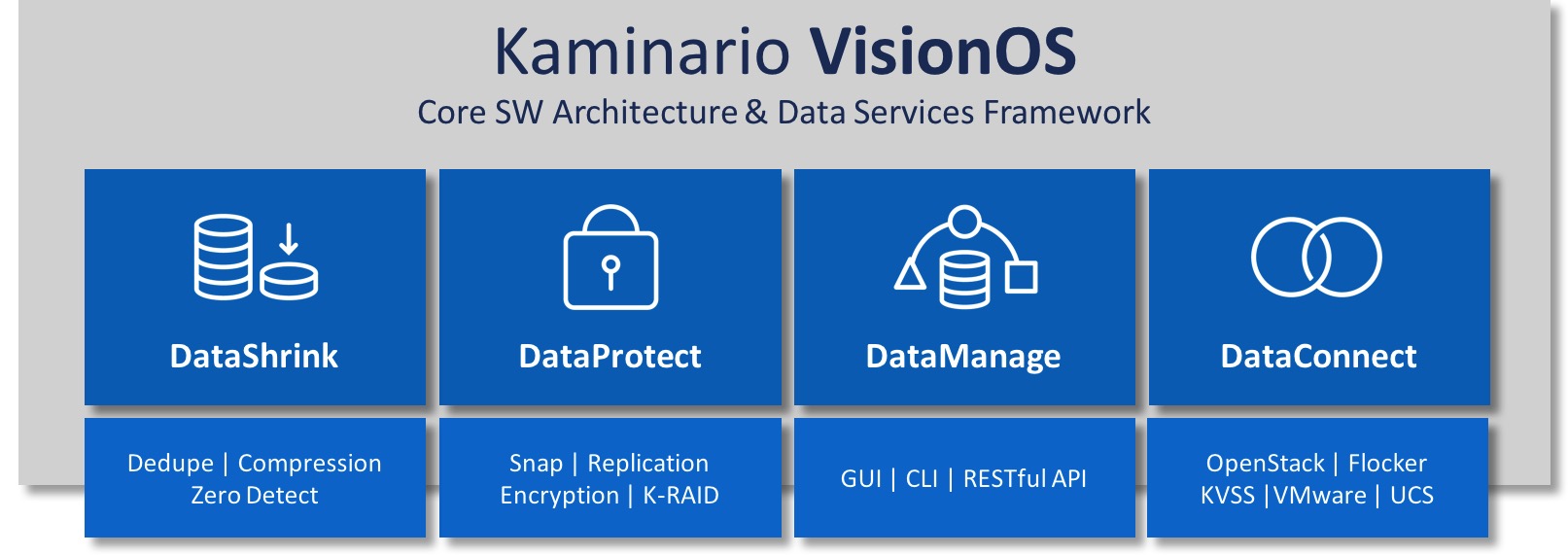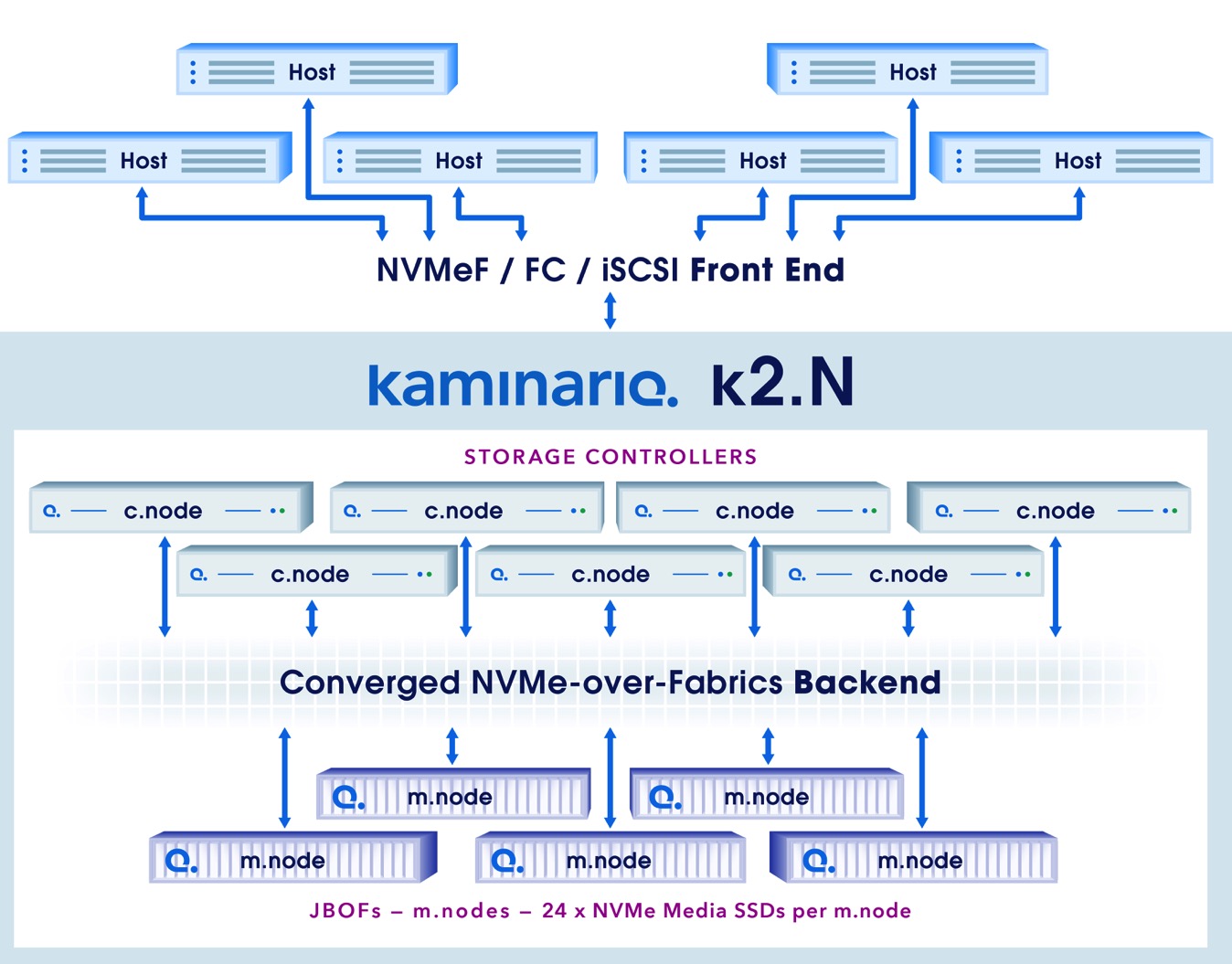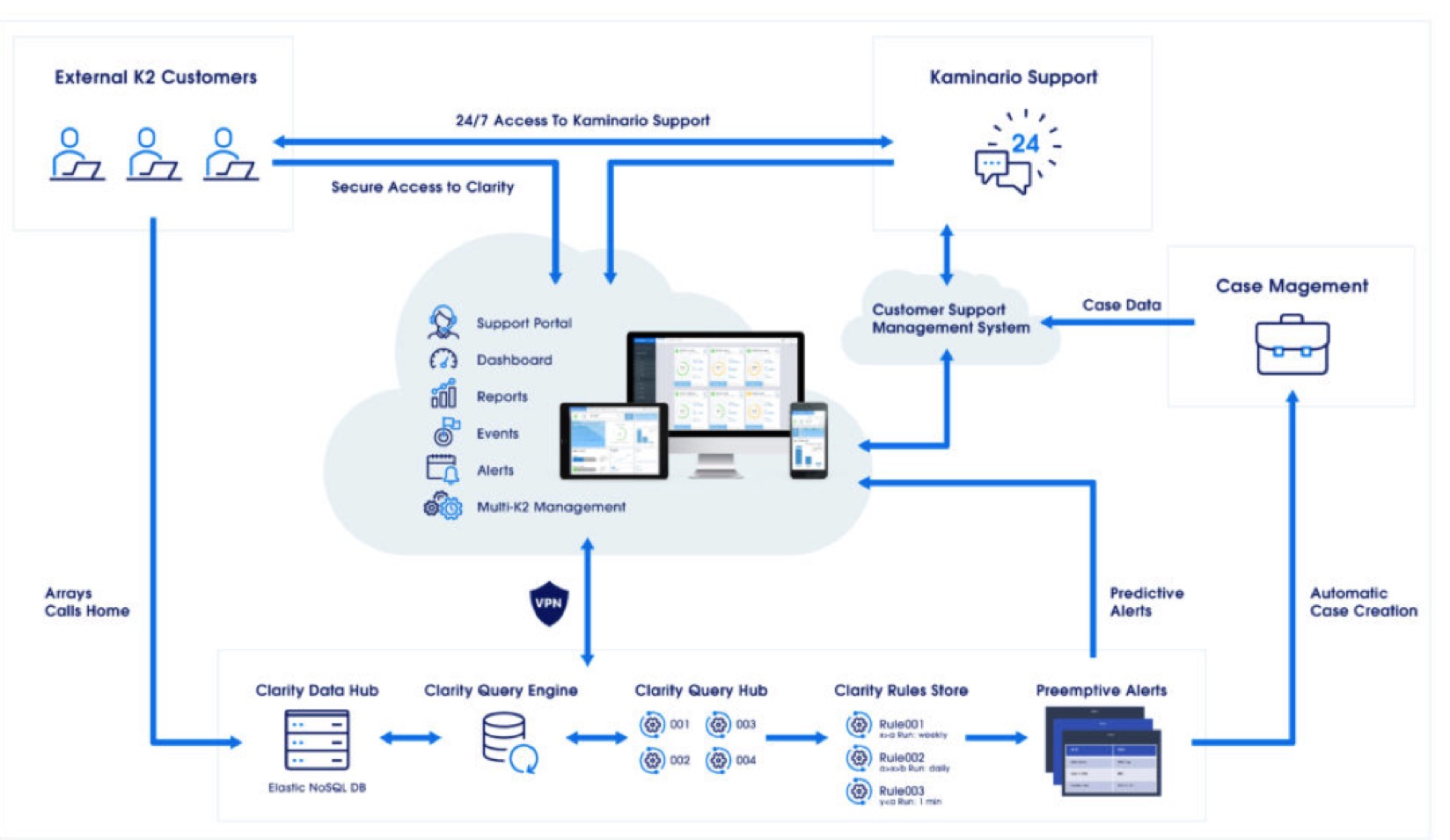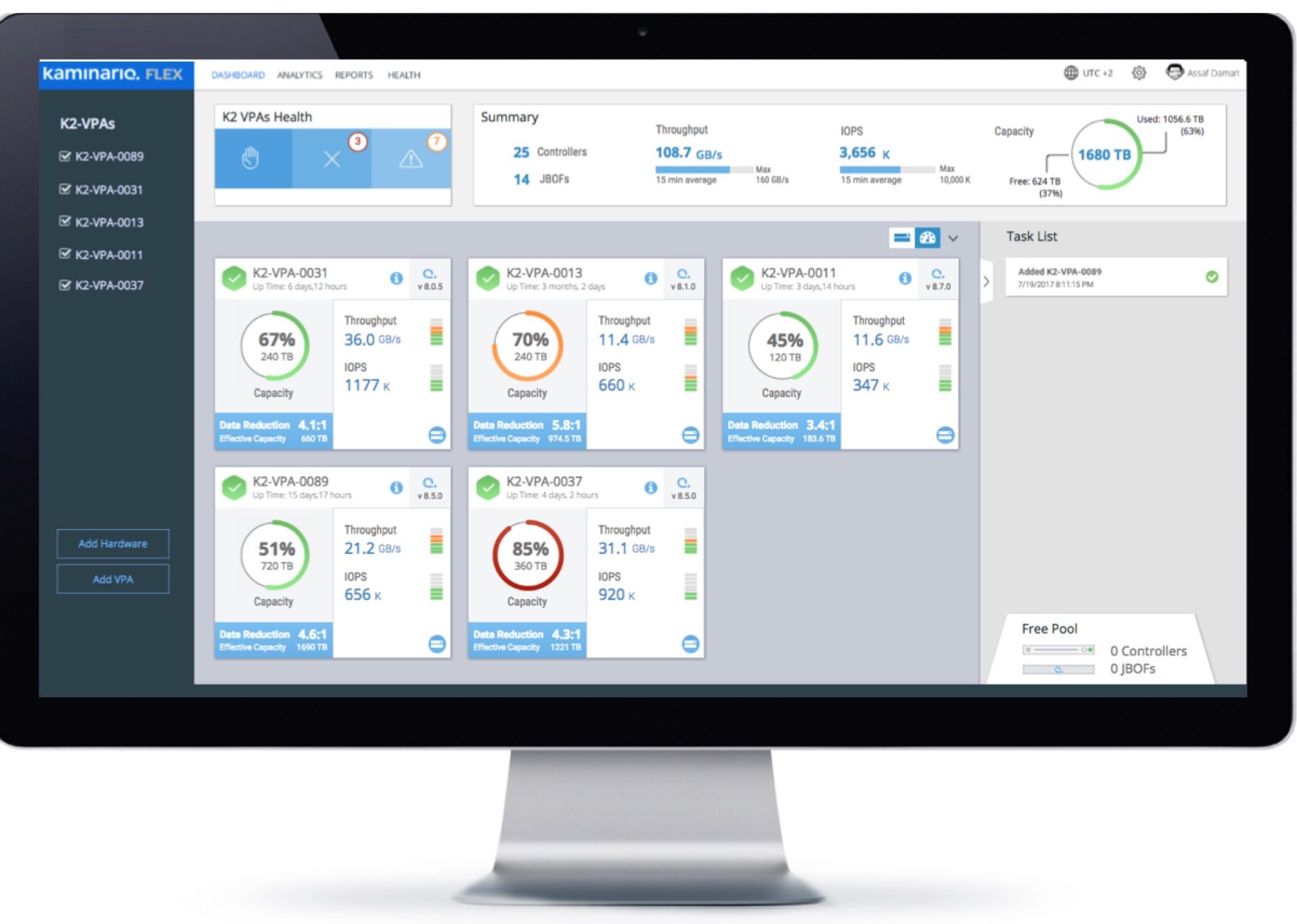Kaminario: Composable Data Platform for NVMe-Based K2.N Architecture Available
Incorporating VisionOS, Clarity and Flex software solutions
This is a Press Release edited by StorageNewsletter.com on May 21, 2018 at 2:32 pmKaminario Technologies Ltd. announced availability of .N-capable versions of its composable data platform, incorporating the VisionOS, Clarity and Flex software solutions.
These enhancements extend the established software platform supporting the Kaminario K2 AFA and the Cloud Fabric software-based offerings to also support the converged NVMe and NVMe over fabric architecture of K2.N.
K2.N is next generation all-flash storage architecture, delivers a new level of performance and agility while leveraging the full set of established data services available on the 6th generation K2 all-flash array.

VisionOS and Clarity have been the backbone of Kaminario K2 offering – recognized by Gartner for achieving the highest score in three out of five use cases in the 2017 Critical Capabilities report for solid state arrays. Flex is a storage orchestration platform that allows customers to dynamically compose and manage high performance, virtual storage arrays with no physical reconfiguration. Availability of .N-capable VisionOS and Clarity and the first production release of Flex create a seamless path for cloud datacenter operators to move to the next generation of NVMe and NVMe over fabric infrastructure.
“NVMe and NVMe over fabric technologies are destined to be the standard for datacenter class storage infrastructure,” said Eyal David, CTO. “Kaminario’s composable data platform uniquely leverages low latency NVMe over fabric connectivity to define a new paradigm for shared storage that delivers the performance and cost efficiency of all-flash arrays and the operational efficiency of hyperconverged infrastructure.”
New .N-capable features of Kaminario’s composable data platform include:
VisionOS now supports any-to-any configurations of controllers, called c.nodes, and media shelves, called m.nodes. In the K2.N architecture, customers can build storage arrays comprised of any number of c.nodes and m.nodes to deliver the exact level of performance and capacity efficiency needed for a workload. This approach does away with the traditional notion of scale-up or scale-out storage based on a dual controller architecture.
Clarity now brings monitoring, analytics, and service management to the K2.N platform. Clarity can monitor a mix of K2 and K2.N assets for a customer and provide enterprise-wide capacity and performance monitoring utilities. The latest Clarity release also incorporates new reporting to support the usage-based Cloud Fabric pricing model.
Flex supports dynamic orchestration of K2.N resources. This includes the creation of Virtual Private Arrays (VPAs) comprised of any number of c.nodes and m.nodes and the ability to allocate resources from one VPA to another at the software layer – with no physical reconfiguration of resources.
.N-capable features are available in version 8 of VisionOS, Clarity and Flex. Composable data platform can be purchased as a pre-integrated appliance – K2 and K2.N or as a software-only offering, Cloud Fabric.
“Kaminario’s application of NVMe performance to data mobility, along with the orchestration layer to manage composability, not only enables a flexibility that is sorely needed in mainstream mixed workload environments but also is unique in the industry,” said Eric Burgener, research VP, storage, IDC.
“We believe Kaminario’s AFA was already competitive, and the new version of the system should sharpen the company’s edge.” said Tim Stammers, senior analyst, 451 Group. “The composability promised for the K2.N looks impressive, and we presume it will appeal most strongly to the service providers that are Kaminario’s primary target customers.“
Read also:
Kaminario: K2.N All-Flash Storage Solutions Based on NVMe and Flex Software
Provide composable storage infrastructure delivering increased performance, scalability and agility for private cloud environments.
2017.08.18 | Press Release
















 Subscribe to our free daily newsletter
Subscribe to our free daily newsletter

